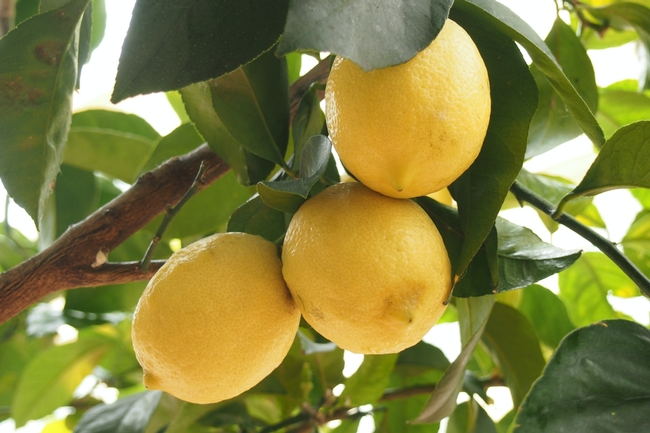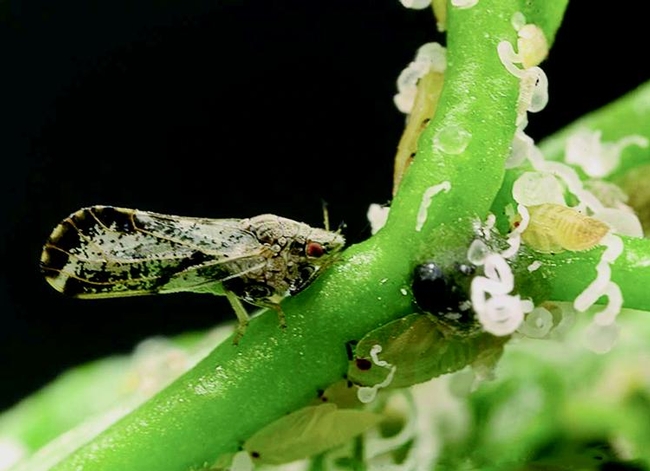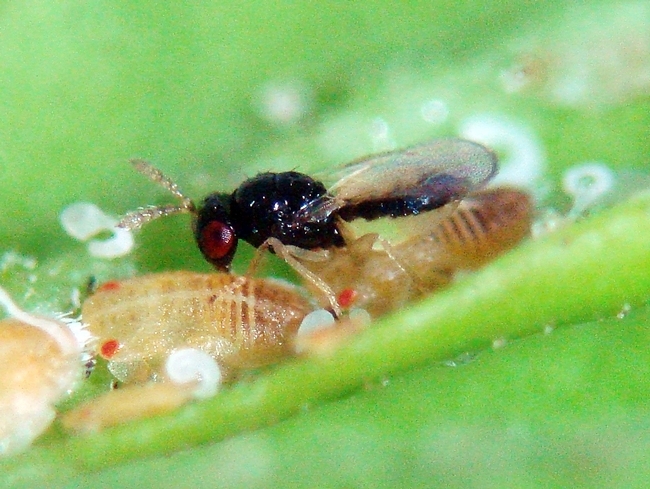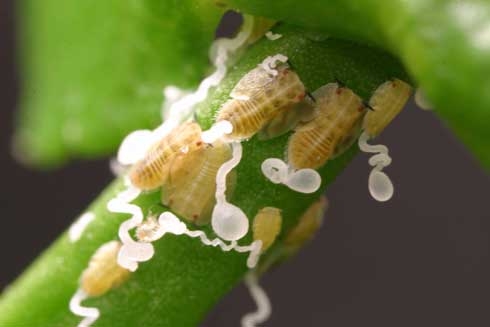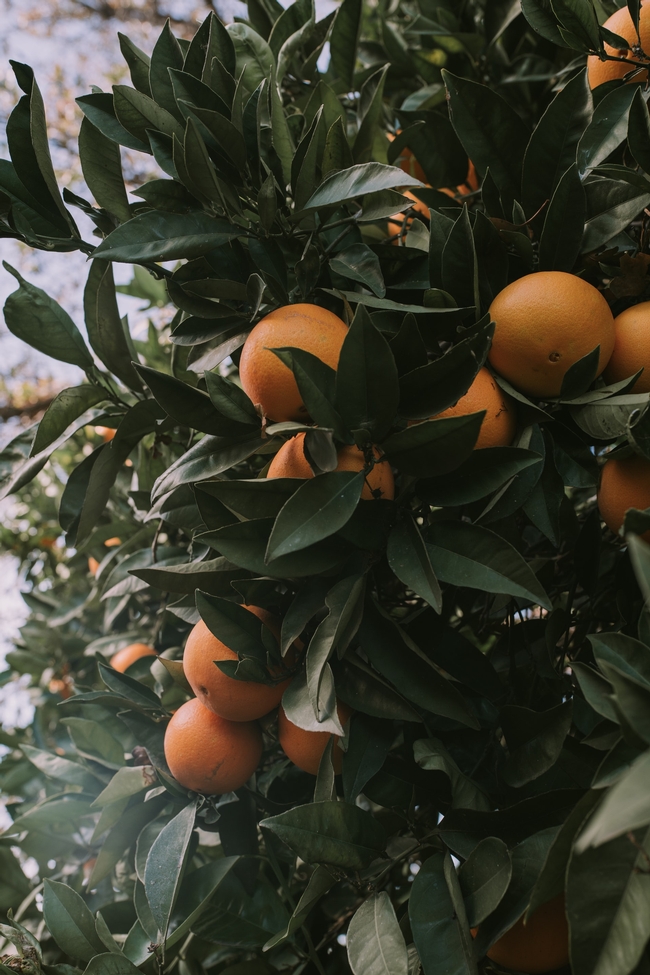By Susanne von Rosenberg, UC Master Gardener of Napa County
If you're observant and you own citrus trees, you may have noticed that they usually have three flushes of growth each year–in spring, summer and fall. Young citrus trees and lemons tend to flush periodically year-round.
During the flushes we need to be extra vigilant. Why? Those new leaves are especially attractive to the Asian citrus psyllid (ACP), which is a carrier for a devastating citrus disease called huanglongbing (HLB). HLB eventually kills the trees it infects, and there is currently no cure. Before it kills the trees, it affects the quality of the fruit. The fruit becomes misshapen and the juice bitter.
HLB has been found in Southern California since 2012, and the state is working hard to contain and control it. The goal is to buy time for scientists to find a cure. At this point, University of California researchers have identified one promising predator of ACP, Tamarixia radiata. Tamarixia strongly prefers ACP nymphs and can significantly reduce psyllid populations. Tamarixia and other natural enemies have reduced ACP populations in Southern California, but they have not eradicated it and have not halted the spread of HLB.
The most effective way to buy more time is to control the spread of the psyllid. Without its carrier, HLB cannot spread. An ACP nymph (immature insect) takes the bacteria causing HLB into its body when it feeds on infected plants. When it flies away as an adult, the bacteria-carrying psyllid can feed on a healthy tree and inoculate it with the bacterium. It only takes a few psyllids to spread the disease.
You might ask why we look for ACP when we could just remove the infected trees. Detecting infected trees is difficult because it can take several years for symptoms to show. Meanwhile, psyllids can pick up HLB bacteria and spread them only a few weeks after the tree is infected.
We've been lucky in Napa County. There have been no confirmed cases of HLB in Napa County nor any confirmed detections of ACP. There were a few detections of ACP in our vicinity, but none recently.
In Florida, where HLB spread widely, citrus production has been cut by more than half. California is doing its best to avoid that fate for its citrus industry and the many California homeowners who have citrus trees.
All of us need to do our part to help prevent the spread of HLB. The most important things you can do are to monitor your citrus trees for the psyllid and comply with citrus quarantine rules.
When your trees put out new growth, check for evidence of the psyllid. ACP feeds on all varieties of citrus and several closely related ornamental plants, including calamondin, box orange and Indian curry leaf. Inspect the tiny, newly developing leaves on your citrus trees. Walk around each tree and check for signs of psyllid feeding and damage, including notched leaves, nymphs, honeydew, sooty mold or adult ACP.
If you think psyllids are present, use a magnifying glass to look for the sesame seed-sized yellow nymphs with their waxy tubules. Nymphs feed only on tender new leaves and don't fly, so looking for nymphs on citrus flush is most effective.
Each nymph produces a waxy tubule from its back end to help expel the sugary waste from feeding on sap. The tubule's shape—a curly tube with a bulb at the end—is unique to ACP and can be used to identify it. Adult ACP are tiny, mottled brown and about the size of an aphid or a grain of rice. Adults perch with their hind quarters angled up. (No other insect feeds like this.)
Other psyllids such as Eucalyptus psyllids, tomato psyllids and Eugenia psyllid can be found in home gardens. You can find images of the Asian citrus psyllid and its life stages on the UC ANR website at http://ucanr.edu/acp. If you find signs of the insect, call the California Food and Agriculture Exotic Pest Hotline at (800) 491-1899.
To comply with quarantine rules, do not transport citrus plants, budwood or plant material such as leaves out of your area. It's okay to move clean, washed fruit free of any leaves or stems. Also, please purchase the trees only from reputable nurseries. Do not accept tree cuttings or budwood from friends or relatives.
Drying out or double-bagging citrus waste after pruning or cutting down a citrus tree ensures that live psyllids won't ride into another region on the foliage. Controlling ants in and near citrus trees with bait will also help. Ants protect ACP from its natural enemies, as they do for aphids.
Here is a 4 minute video to be informed about ACP.
Map showing location of ACP and Huanglongbing in California.
Food Growing Forum: Last Sunday of the month through October. Register to get Zoom link at: http://ucanr.edu/foodgrowingforum2020
Sunday, September 27, 3 pm to 4 pm, ”Harvesting Your Bounty and What Else to Do Now”
Sunday, October 25, 3 pm to 4 pm, “Planting Onions, Leeks and Other Alliums and What Else to Do Now”
Napa Library Talks: First Thursday of each month. Register to get Zoom link.
Thursday, October 1, 7 pm to 8 pm, “Creating Wildlife Habitat” http://ucanr.edu/wildlifehabitat2020
Pollinator Gardening, Sundays, 1 pm to 2 pm. Register to get Zoom link.
September 20– Introduction to Gardening for Pollinators
September 27 – Pollinators and the Plants They Love
|
|
|
|
October 11 – Caring for Your Pollinator Garden http://ucanr.edu/2020pollinatorpart4care |
Got Garden Questions? Contact our Help Desk. The team is working remotely so please submit your questions through our diagnosis form, sending any photos to msgarden@countyofnapa.org or leave a detailed message at 707- 253-4143. A Master Gardener will get back to you by phone or email.
INTERESTED IN BECOMING A UC MASTER GARDENER OF NAPA COUNTY VOLUNTEER? Send us your information through our website request.
For more information visit http://napamg.ucanr.edu or find us on Facebook or Instagram, UC Master Gardeners of Napa County.
Attached Images:
